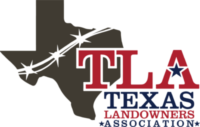
A deer hunting trail camera on a tree in the woods ready to take pictures
USING TRAIL CAMERAS FOR GAME MANAGEMENT
With each new generation, society has steadily adapted to a more technologically-driven life. Whether we speak to a GPS device for directions, talk through our radios to have a mobile phone conversation, or use phones to take pictures and videos, we are a digitalized nation.
It doesn’t take long for you to look around and note all of the products available that make life, invariably, easier on us. This attitude can be distinguished in the wildlife management world as well.
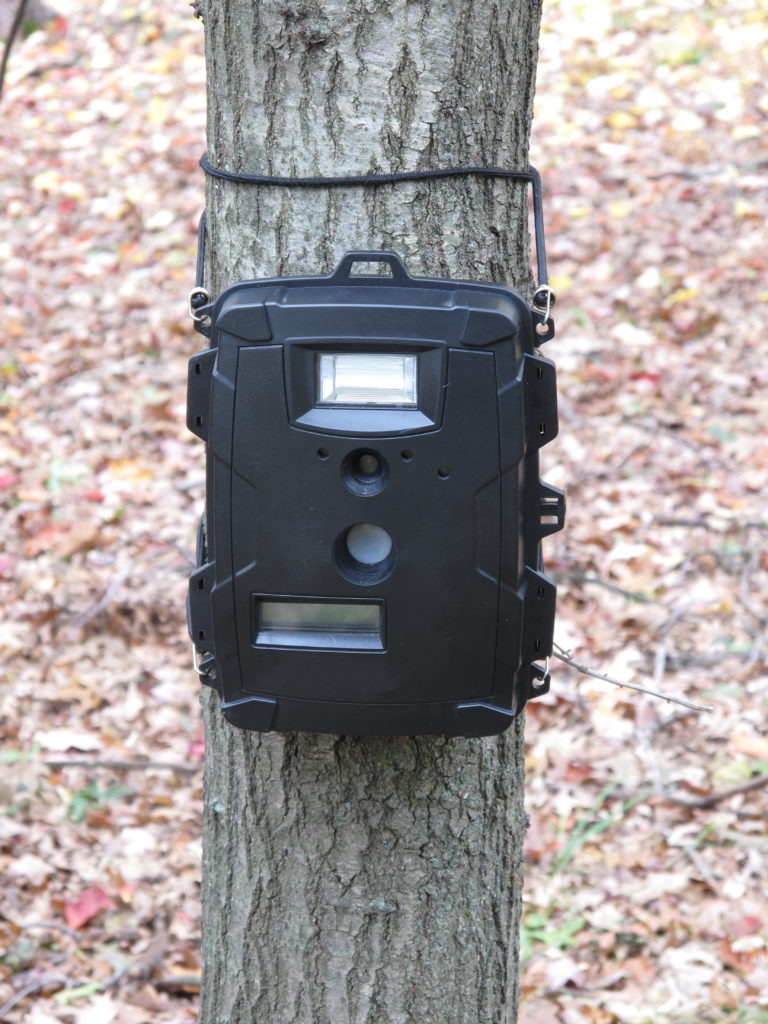
Trail cameras have replaced the scouting ventures of our great-grandfathers and enabled us to “see” the woods from the comfort of home computers versus hours spent observing in the outdoors. There are two basic options offered by trail cameras that are highly useful to wildlife managers: a motion-activated option and a time-lapse option.
The motion-activated trail camera takes a picture or video when something triggers the sensors, while the time lapse option takes an image at one to five second intervals and links them together to form a video of events that occurred throughout a specific time period.
So how can you benefit from trail cameras? The use of trail cameras as a wildlife observation aid is mostly known around hunting circles. However, trail cameras can be used for so much more. Those interested in wildlife management can use trail cameras to both monitor and collect data on a wide range of wildlife species.
Trail Cameras for Whitetail Deer
Trail cameras can be a great tool for those interested in managing whitetail deer on their property. The potential to which the cameras can be utilized depends primarily on the goals of the land manger. At the most basic level, cameras can capture photos and footage of deer in the area. These photos can be used to gain a general idea of the diversity and movements of deer inhabiting the property. With this basic information, land managers can make informed harvest management decisions such as selectively harvesting mature bucks or does.
At a more advanced level, trail cameras can be a versatile, low-cost option for estimating population parameters such as deer density, age structure, buck-to-doe ratios and fawn production. The use of trail cameras for deer surveys became popularized when Jacobson et al. (1997) demonstrated that the technique could reliably and accurately estimate adult buck numbers.
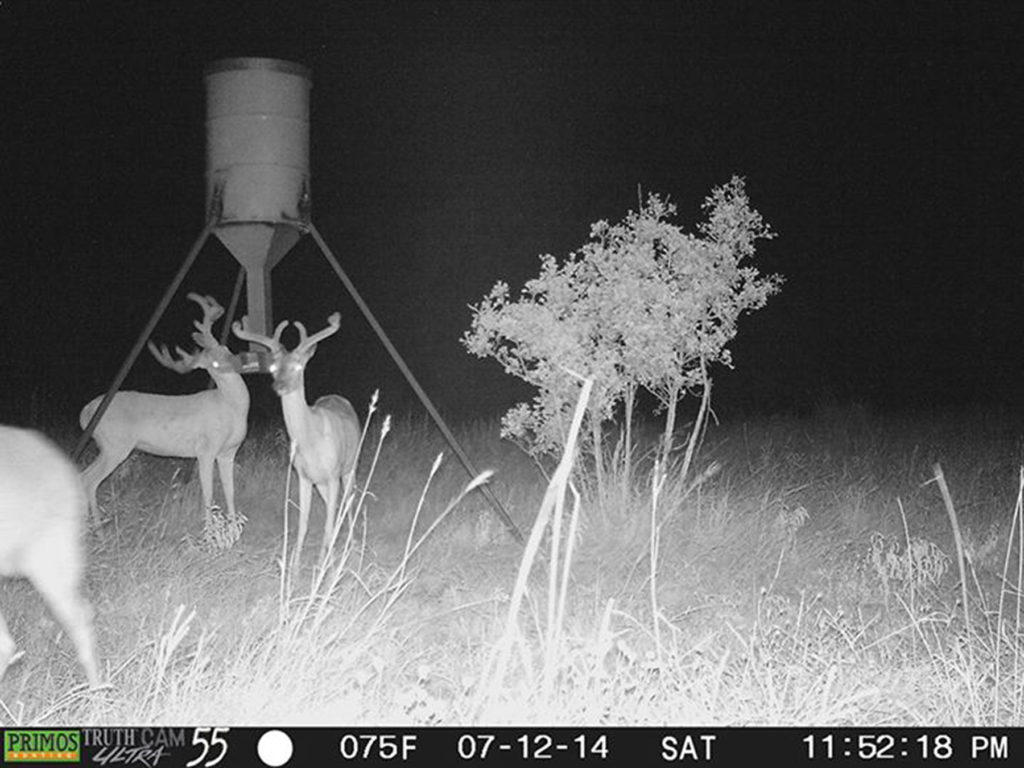
Over time, the technique has been further developed and several protocols currently exist. The use of bait is a primary component incorporated into many of these protocols, yet some concern exists that individual deer may not use bait equally. Recent research suggests that placing cameras on well used trails may provide a practical alternative to using baited camera locations (McCoy et al. 2011).
Trail Cameras for Upland Gamebirds like Quail and Turkey
While using trail cameras for deer densities is beneficial, other wildlife can also profit from these photo ops as well. The Texas Quail Index (TQI), designed to help landowners monitor their quail populations, suggests setting up trail cameras for several of their land manager activities. Roads and trails are commonly frequented by a variety of wildlife species including upland gamebirds.
Cameras can also be beneficial in documenting “dummy nest” (simulated quail or turkey nests) predators who could potentially depredate a real nest. Both of these uses serve as an awareness mechanism for landowners to not only visually observe upland gamebird prevalence, but also possible predators of quail and turkey on their property.
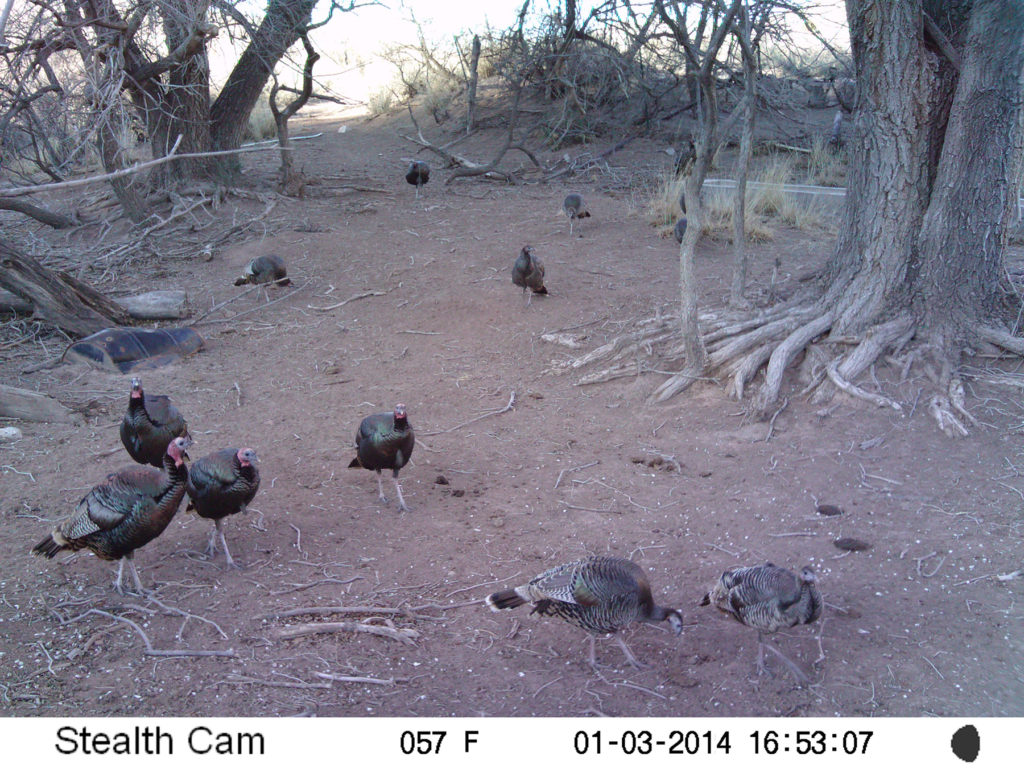
Predator management decisions could then be formulated based on camera survey results. Strategically placed cameras can also be used to monitor habitat utilization and age structure of upland gamebirds.
Areas such as known loafing or roosting sites, watering holes or feeders are a great place to begin monitoring efforts. Who knows, you might even capture a video of a male turkey strutting his stuff for the ladies.
Trail Cameras for Feral Hogs
Often the damage left behind serves as a viable indicator of the presence of feral hogs on a property. Feral hogs typically focus their daytime movements during the early morning and late evening, with the bulk of their activity taking place through the night. This can make in-person observations difficult and highly random.
For even more information about using game cameras for wild pigs, check out another article written by Mark Tyson, Using Game Cameras for Feral Hogs.
Trail cameras can be extremely useful in monitoring feral hog activities and also play a vital role in population reduction efforts. Cameras placed in a baited site provide insight into the number and body size of the responding feral hogs.
With this information, land managers can make an informed decision on which legal population reduction technique is best suited for the hogs observed.
Research suggests that trapping is an effectual technique; corral traps, in particular, have been found to be four times more effective than standard 4ft by 8ft box traps (Williams et al. 2011). Techniques such as strategic shooting, snaring and the use of trained dogs should be utilized when necessary to supplement trapping efforts.
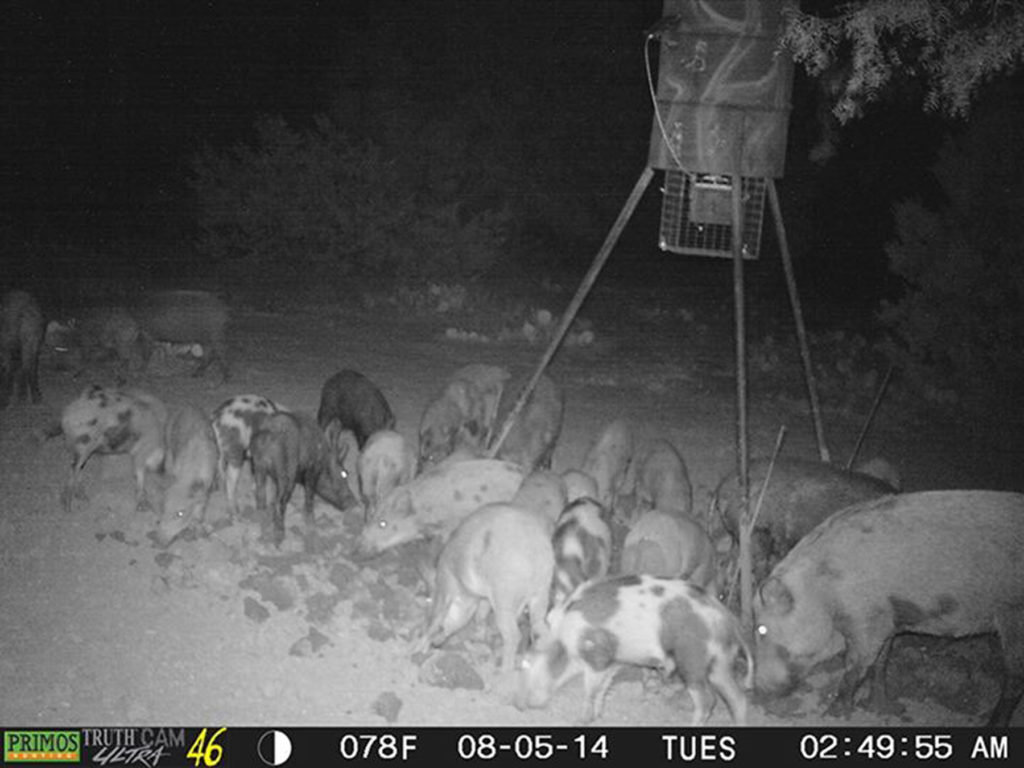
A holistic plan should be developed prior to implementing population reduction strategies, as to prevent one technique from interfering with others. For more information on feral hogs and their management visit the Texas A&M Feral Hog Website.
These examples highlight just a few of the ways that trail cameras can be used in wildlife management.
For a more extensive review on the subject, refer to Potential Uses for Trail Cameras in Wildlife Management which is available from the Texas A&M AgriLife Extension Bookstore for FREE!
Land managers can think of trail cameras as an extra set of eyes on the landscape that works for no wage, never calls in sick and always tells the truth. While trail cameras are not the cure all for wildlife management concerns, they do provide invaluable data that previously could only be obtained personal observation in the wild. Ultimately, you decide if the effort is worth the reward.
Authored By:
Mark Tyson, M.S. and Kristen Tyson, M.A.
